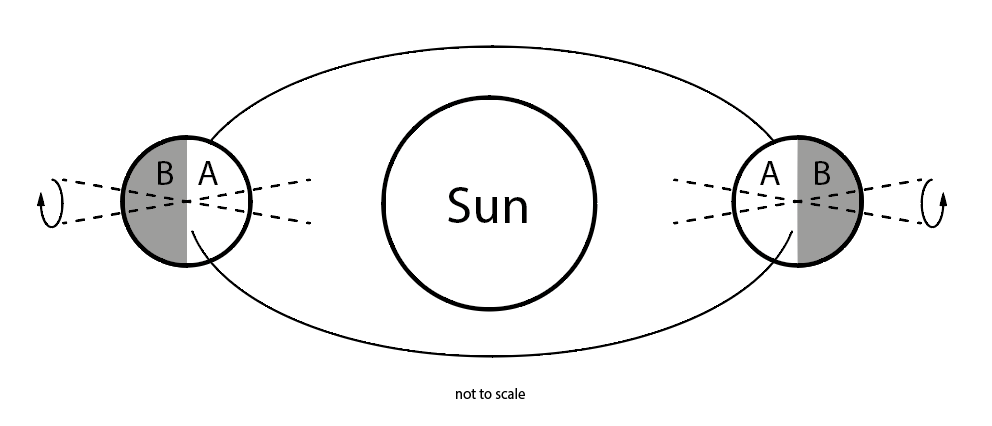I'm working on a story set in a planet of permanent dusk/dawn, and with a dark side that never sees the light of sun. I know that a planet tidally locked to its star would (roughly) look like this, but I also want a day and night cycle.
For this cycle the only idea I came up with is that this planet has a very fast precession, in cycles of about 24 hours or so. I've drawn the following model:
The requisites for my setting are:
- The brightest the day gets is a dim light similar to dusk/dawn.
- There must be a day/night cycle, though it doesn't have to be too pronounced.
- There must be a dark side of the planet the sunlight never reaches (and, inevitably, a bright side).
- Obviously, human life has to be possible.
Consider the mass, gravity and size (and other factors) of the planet similar to Earth's. The distance from the sun may vary in order to made this planet neither too hot nor too cold to sustain human life.
Is this model possible? Can a planet wobble like this (about 10 degrees) and maintain a balance?

